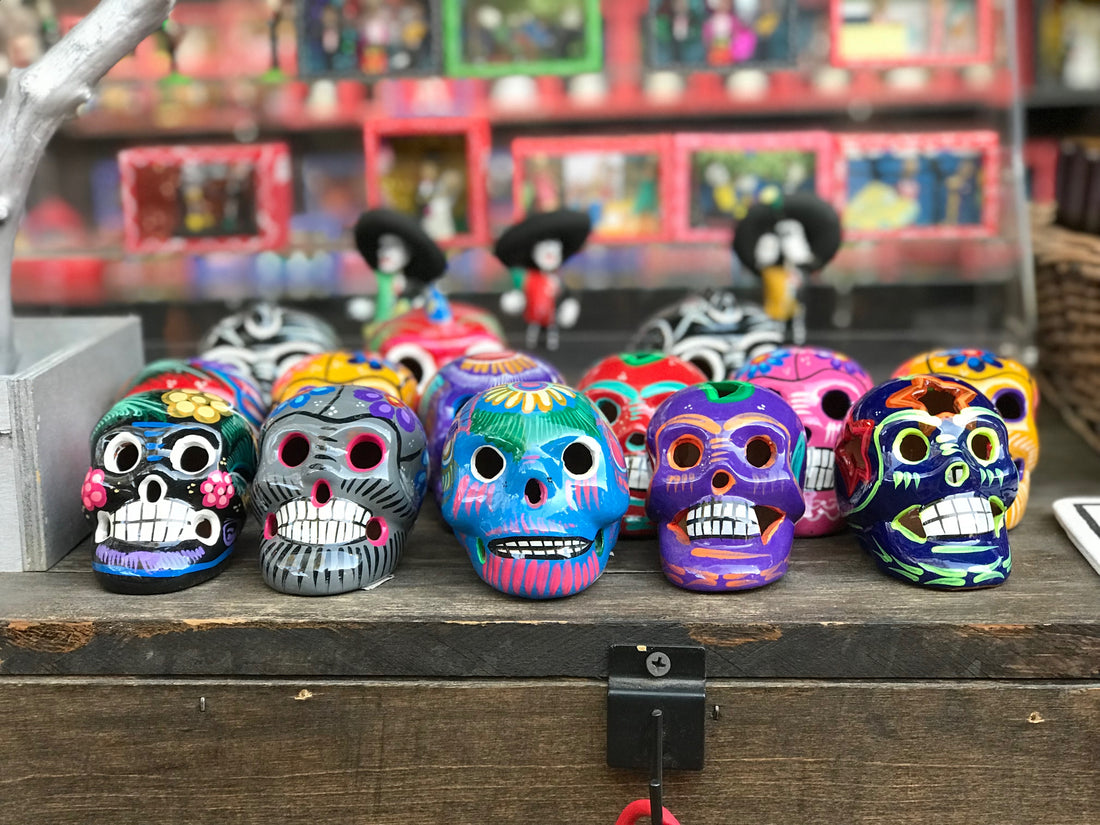By Julie R Butler
To people who aren’t familiar with Mexican culture, Day of the Dead may seem to be some kind of morbid death cult. Or, since the annual holiday falls on 2 November, many people think it’s just the Mexican version of Halloween. But those assumptions couldn’t be further from the truth!
With Día de Muertos celebrations gaining increasing worldwide attention in recent years, let’s take a look at what it’s really all about for Mexicans and anyone else who is interested in looking at death and the loss of loved ones from a different perspective.
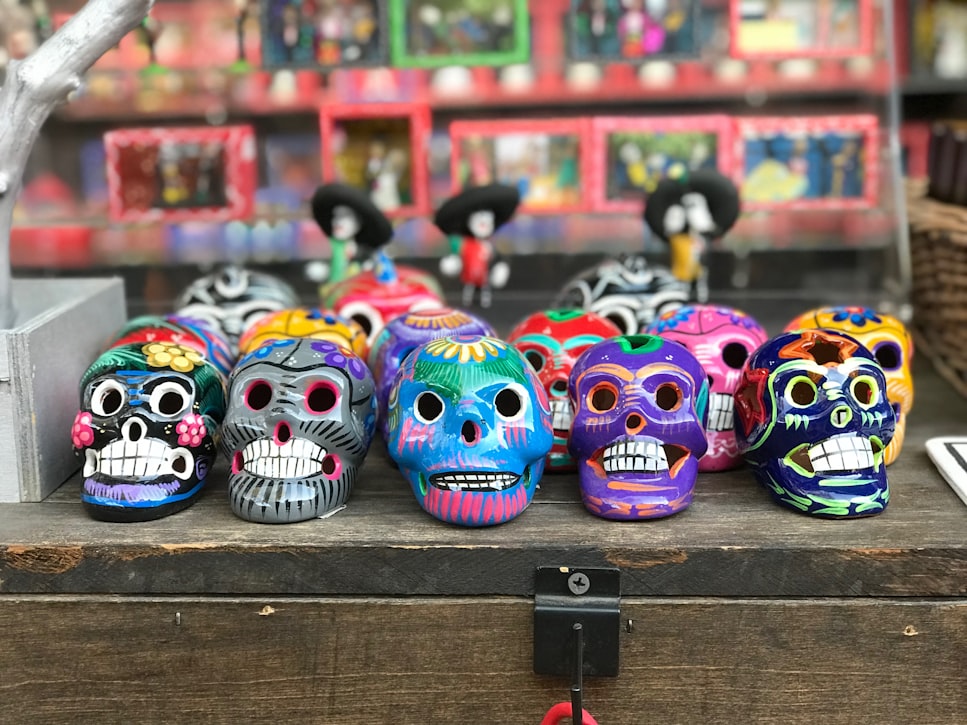
Día de Muertos Is about Honoring and Connecting with Deceased Loved Ones
At the heart of Día de Muertos is the concept of honoring and connecting with loved ones who have passed away. That’s what the ofrendas (altars) are for – they’re meant to attract the spirits of the dead. Families create elaborate altars in their homes with photographs of the deceased as well as offerings of their favorite food and drink. They are traditionally adorned with orange cempasúchitl flowers (marigolds), brightly colored tissue paper decorations called papel picado, and particular foods such as pan de muerto (sweet bread made just for this holiday), calabasa en dulce (candied pumpkin), and tamales.
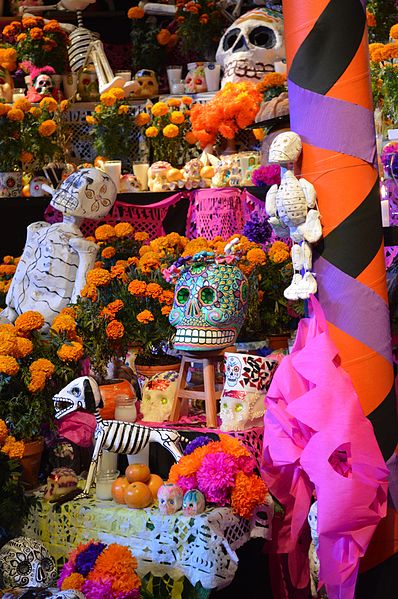
Sugar skulls are another common feature of ofrendas. These candy skulls harken back to Aztec times, when they were made of amaranth seeds and honey instead of sugar, which didn’t exist in pre-Colombian Mexico. Candles are lit and copal incense is burned to attract the spirits of the dead, as well.
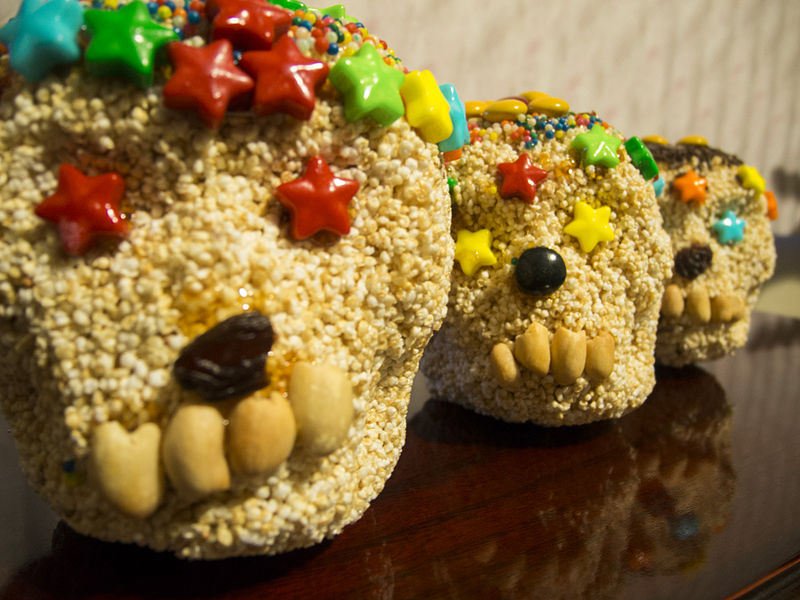
Another way Mexicans connect with deceased loved ones is by gathering at their gravesites to share food and drink, stories, poetry, and music. Gravesites are cleaned up and decorated with yet more ofrendas featuring cempasuchitl along with other beautiful flowers, photos, candles, fruits, and skulls. While the mood at the gravesite gatherings may sometimes turn solemn, there’s generally a festive atmosphere because getting together with those you love is thought to be a joyous occasion.
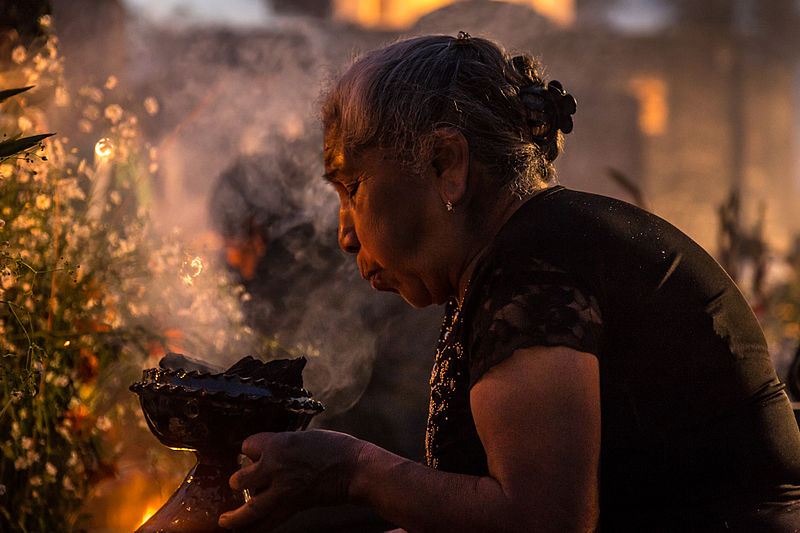
Photo by Jordi Cueto-Felgueroso Arocha, CC BY-SA 4.0
Mocking the Grim Reaper with Elegantly Dressed Skeletons
In addition to the intensely personal family ofrendas and gravesite observances, Day of the Dead also spills out onto the streets with colorful calaveras, effervescent parades filled with festive skeletons, and many other fun, artistic displays and activities. And throughout the country, people transform themselves into Calaveras Catrinas, where the males dress up in fancy duds, the women wear fine dresses and oftentimes, big, fancy hats, and faces are painted to look like skeletons with beautiful designs – much like the sugar skulls. I’ve even seen live dogs spray-painted to look like skeleton dogs!

If this sounds an awful lot to you like the movie Coco, it’s because the filmmakers did a fantastic job of capturing the lively spirit of Día de Muertos just as it is IRL! (Well, except for the alebrijes as animal spirit guides – they made that part up). As the movie depicts, Day of the Dead really is all about family togetherness while dressing up, laughing, and expressing joy in the face of death. It’s the distinctly Mexican way of accepting death as a part of the great circle of life.

